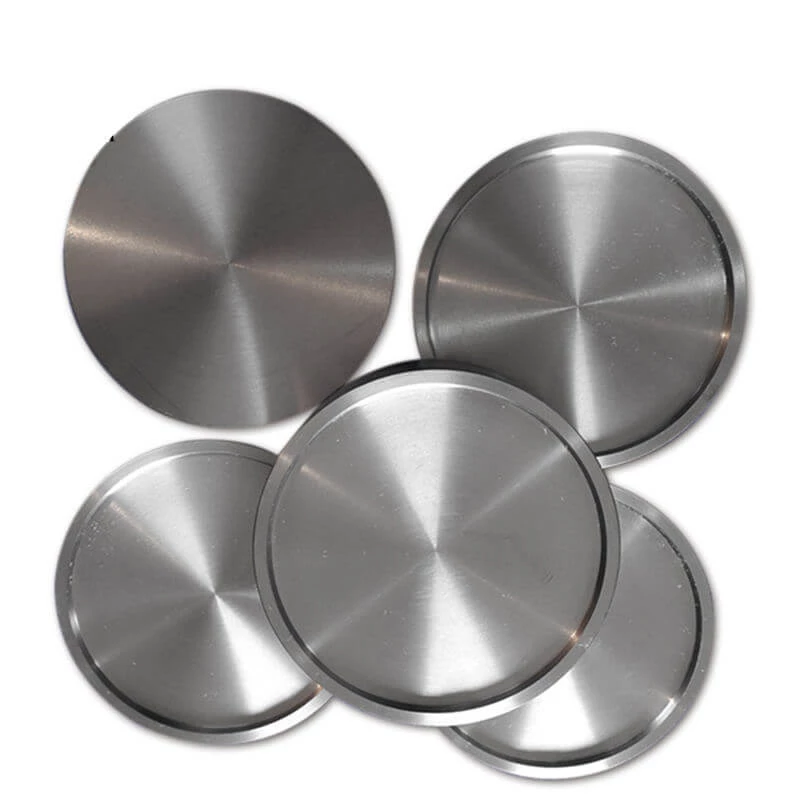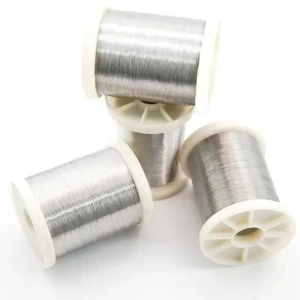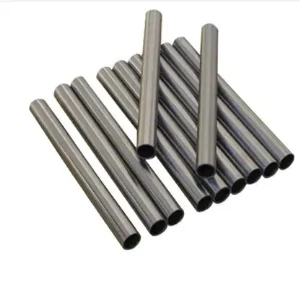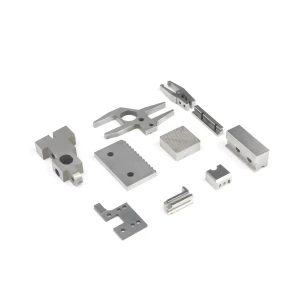Niobium is a lustrous, grey, ductile, paramagnetic metal in group 5 of the periodic table, with the outermost shell having a different electron configuration than group 5. Metals take on a bluish tinge when exposed to air for long periods of time at room temperature. Despite its high melting point (2,468 °C) in its elemental form, it is less dense than other refractory metals. Additionally, it is corrosion resistant, has superconducting properties, and forms a dielectric oxide layer.
In modern technology and industry, rare metals and their alloys are widely used due to their unique physical and chemical properties. Among them, niobium (Niobium), as an important rare metal, plays a key role in many high-tech products due to its excellent properties. Today we will delve into the mysteries of niobium targets and their applications in contemporary industry.
First, let’s understand what a niobium target is. In coating technology, the target is the source material used in the thin film deposition process. Niobium targets are materials used to produce high-purity niobium thin films through physical vapor deposition (PVD) or similar methods. These films are critical in electronic devices, optical components, and other high-performance materials.
Next, let’s break down some of the salient features of niobium targets.
1. Excellent high temperature performance: Niobium can still maintain good mechanical stability and corrosion resistance at high temperatures, which makes niobium targets occupy a place in extreme environment applications such as aerospace and aerospace.
2. Superconducting properties: Pure niobium has a low superconducting transition temperature, which means that at low temperatures, niobium has almost no resistance. This property makes it play an indispensable role in medical imaging and particle accelerators.
3. Good biocompatibility: Niobium has good compatibility with human tissues and will not cause allergies or other adverse reactions, so it is often used in the manufacture of medical devices.
4. Stable chemical properties: Niobium is not prone to chemical reactions with other substances and can maintain its stability even under extreme conditions, which is particularly important in chemical equipment.
Now, let’s explore the applications of niobium targets in various industries.
- In the field of microelectronics, as electronic products develop towards higher performance and smaller size, the requirements for materials are also getting higher and higher. Niobium targets can be used to prepare conductive films and insulating films to improve chip performance and efficiency.
- In the optical industry, high-purity niobium films are widely used as reflective layers or protective layers in telescopes, lasers, and various photodetectors.
- In terms of medical devices, niobium targets can be used to make artificial bones, pacemakers, etc., to help improve patients' quality of life.
- In addition, in the aerospace field, niobium alloys are used as construction materials for rockets and satellites due to their high temperature resistance.
After understanding the characteristics and applications of niobium targets, it is easy to understand why this material is so important in today's high-tech environment. It is not only a small accessory of modern industry, but also the cornerstone supporting countless innovative technologies and products.
Finally, although the application prospects of niobium targets are bright, extracting and processing this rare metal still faces many challenges, including scarcity of resources and high refining costs. Therefore, future research and technological development will focus on finding more efficient recycling methods as well as the exploration of alternative materials.
All in all, niobium targets play an irreplaceable role in many high-tech fields with their unique physical and chemical properties. From smartphones to space exploration, from medical devices to advanced electronic equipment, the application of niobium targets is driving the progress of human society and demonstrating the infinite possibilities of scientific and technological development.
| Specification | |
| Item | 99.99% High Purity Niobium Oxide Sputtering Target |
| Standard | ASTM B393 |
| Density | 8.57g/cm3 |
| Purity | ≥99.95% |
| Size | according to customer's drawings |
| Inspection | Chemical composition testing, Mechanical testing, Ultrasonic inspection, Appearance size detection |
| Grade | R04200, R04210, R04251, R04261 |
| Surface | polishing, grinding |
| Technique | sintered, rolled, forged |
| Feature | High temperature resistance, corrosion resistance |
| Application | Superconducting industry, Aerospace aviation, Chmeical Industry, Mechanical |
| Chemical Composition | |||
| Grade | R04200 | R04210 | |
| Main element | Nb | Bal | Bal |
| Impurity elements | Fe | 0.004 | 0.01 |
| Si | 0.004 | 0.01 | |
| Ni | 0.002 | 0.005 | |
| W | 0.005 | 0.02 | |
| Mo | 0.005 | 0.01 | |
| Ti | 0.002 | 0.004 | |
| Ta | 0.005 | 0.07 | |
| O | 0.012 | 0.015 | |
| C | 0.035 | 0.005 | |
| H | 0.012 | 0.0015 | |
| N | 0.003 | 0.008 | |
* High ductility
* Good Superconductity property in low temperature
* High melting point
* Good corrosion resistance property
* Good wear resistance property
Applications 99.99% High Purity Niobium Oxide Sputtering Target
Features 99.99% High Purity Niobium Oxide Sputtering Target
*High ductility
* Good Superconductity property in low temperature
*High melting point
* Good corrosion resistance property
* Good wear resistance property
Applications 99.99% High Purity Niobium Oxide Sputtering Target
Niobium targets are raw materials used in thin film preparation processes such as physical vapor deposition (PVD), and are mainly used to produce niobium thin films. Here are some of the main applications of niobium targets in various industries:
1. Electronic industry: In the fields of semiconductors and microelectronics, high-purity niobium films can be used to prepare conductive layers, insulating layers or diffusion barrier layers to improve the performance of chips and electronic components.
2. Optical applications: Due to its good optical properties, niobium films can be used as protective or functional layers for mirrors, beam splitters, filters and various photodetectors.
3. Superconducting applications: Pure niobium is a low-temperature superconducting material, a key component in superconducting magnets for particle accelerators and medical imaging equipment such as MRI (magnetic resonance imaging) scanners.
4. Medical devices: Because niobium has good biocompatibility, it is used to make certain types of implants, such as artificial bones, pacemakers, etc.
5. Aerospace: Due to its excellent high-temperature strength and corrosion resistance, niobium alloy is suitable for applications in extreme environments, such as certain parts of rockets and satellites.
6. Chemical equipment: Niobium’s acid and alkali resistance makes it used as a corrosion-resistant material in certain chemical processing processes.
7. Coated glass: Coating a layer of niobium film on glass for construction or other special requirements can improve the scratch resistance and other properties of the glass.
8. Decorative and protective coating: Niobium plating on the surface of some high-end products can beautify the appearance and improve wear resistance.
These applications take advantage of niobium's high melting point, good chemical stability, excellent mechanical properties, and its unique superconducting properties. With the development of science and technology, the application fields of niobium targets may be further expanded.
We have more categories for you. lf you can't find the products you want above,just fill in the form and tell us whatproducts you want to import from China.
















